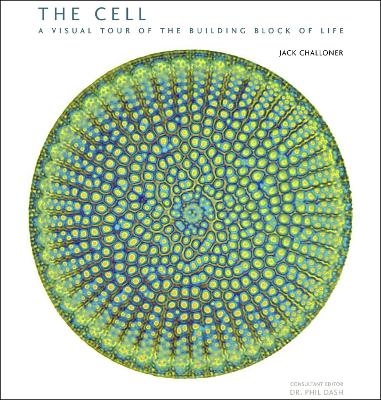
The Cell
A Visual Tour of the Building Block of Life
Seiten
2015
University of Chicago Press (Verlag)
978-0-226-22418-3 (ISBN)
University of Chicago Press (Verlag)
978-0-226-22418-3 (ISBN)
The cell is the basic building block of life. In its 3.5 billion years on the planet, it has proven to be a powerhouse, spreading life first throughout the seas, then across land, developing the rich and complex diversity of life that populates the planet today. With The Cell: A Visual Tour of the Building Block of Life, Jack Challoner treats readers to a visually stunning tour of these remarkable molecular machines. Most of the living things we're familiar with--the plants in our gardens, the animals we eat--are composed of billions or trillions of cells. Most multicellular organisms consist of many different types of cells, each highly specialized to play a particular role--from building bones or producing the pigment in flower petals to fighting disease or sensing environmental cues. But the great majority of living things on our planet exist as single cell. These cellular singletons are every bit as successful and diverse as multicellular organisms, and our very existence relies on them.
The book is an authoritative yet accessible account of what goes on inside every living cell--from building proteins and producing energy to making identical copies of themselves--and the importance of these chemical reactions both on the familiar everyday scale and on the global scale. Along the way, Challoner sheds light on many of the most intriguing questions guiding current scientific research: What special properties make stem cells so promising in the treatment of injury and disease? How and when did single-celled organisms first come together to form multicellular ones? And how might scientists soon be prepared to build on the basic principles of cell biology to build similar living cells from scratch.
The book is an authoritative yet accessible account of what goes on inside every living cell--from building proteins and producing energy to making identical copies of themselves--and the importance of these chemical reactions both on the familiar everyday scale and on the global scale. Along the way, Challoner sheds light on many of the most intriguing questions guiding current scientific research: What special properties make stem cells so promising in the treatment of injury and disease? How and when did single-celled organisms first come together to form multicellular ones? And how might scientists soon be prepared to build on the basic principles of cell biology to build similar living cells from scratch.
Jack Challoner is the author of more than thirty books on science and technology. He also works as an independent science consultant for print, radio and TV.
| Erscheint lt. Verlag | 16.10.2015 |
|---|---|
| Zusatzinfo | Illustrations |
| Sprache | englisch |
| Maße | 218 x 246 mm |
| Gewicht | 907 g |
| Themenwelt | Sachbuch/Ratgeber ► Natur / Technik ► Natur / Ökologie |
| Naturwissenschaften ► Biologie ► Evolution | |
| Naturwissenschaften ► Biologie ► Zellbiologie | |
| ISBN-10 | 0-226-22418-X / 022622418X |
| ISBN-13 | 978-0-226-22418-3 / 9780226224183 |
| Zustand | Neuware |
| Informationen gemäß Produktsicherheitsverordnung (GPSR) | |
| Haben Sie eine Frage zum Produkt? |
Mehr entdecken
aus dem Bereich
aus dem Bereich
Familien und Gattungen einheimischer Pflanzen
Buch | Hardcover (2022)
Haupt Verlag
64,00 €


